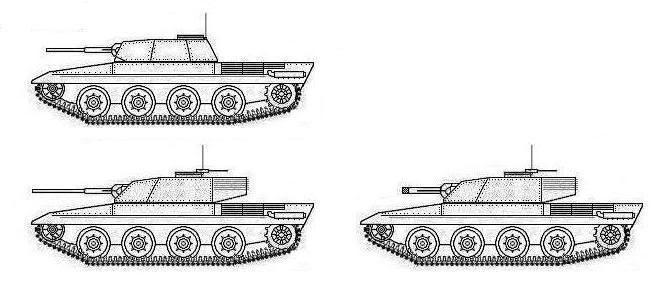You are not logged in.
Dear visitor, welcome to WesWorld. If this is your first visit here, please read the Help. It explains in detail how this page works. To use all features of this page, you should consider registering. Please use the registration form, to register here or read more information about the registration process. If you are already registered, please login here.
This post has been edited 1 times, last edit by "Kaiser Kirk" (Jun 17th 2007, 7:52pm)
This post has been edited 2 times, last edit by "Kaiser Kirk" (Jul 4th 2007, 6:49pm)
Quoted
The main gun is the new 45mm ATG, with a coaxil 13.2mm HMG and a pintle mounted 13.2mm HMG. The coaxial MG can be fired independently of the main armament due to a ball mount. A 138cm turret ring is fitted in expectation that a future support version may mount an 75mm howtizer for infantry support
This post has been edited 1 times, last edit by "Hrolf Hakonson" (Jun 18th 2007, 5:17pm)

This post has been edited 1 times, last edit by "perdedor99" (Jun 18th 2007, 7:16pm)
Quoted
For ground pressure, The first FT-17 tank tried in RL, sunk in the soil at the Hague. As such the tracks are designed to be exceptionally wide, which adds tonnage and degrades speed, but gives that very low ground pressure of 8.5psi, which is more suited for the Netherlands. So it's slow, but should be able to get around well enough.

This post has been edited 1 times, last edit by "Kaiser Kirk" (Jun 19th 2007, 10:29pm)
This post has been edited 1 times, last edit by "Hrolf Hakonson" (Jun 19th 2007, 3:00pm)
This post has been edited 1 times, last edit by "Red Admiral" (Jun 19th 2007, 8:44pm)
Quoted
Originally posted by Red Admiral
The autocannon is mounted because it's available
Quoted
Originally posted by Hrolf Hakonson
(The Pz II series carried a 20mm autocannon, btw.)
This post has been edited 1 times, last edit by "Hrolf Hakonson" (Jun 20th 2007, 3:49am)
Forum Software: Burning Board® Lite 2.1.2 pl 1, developed by WoltLab® GmbH
